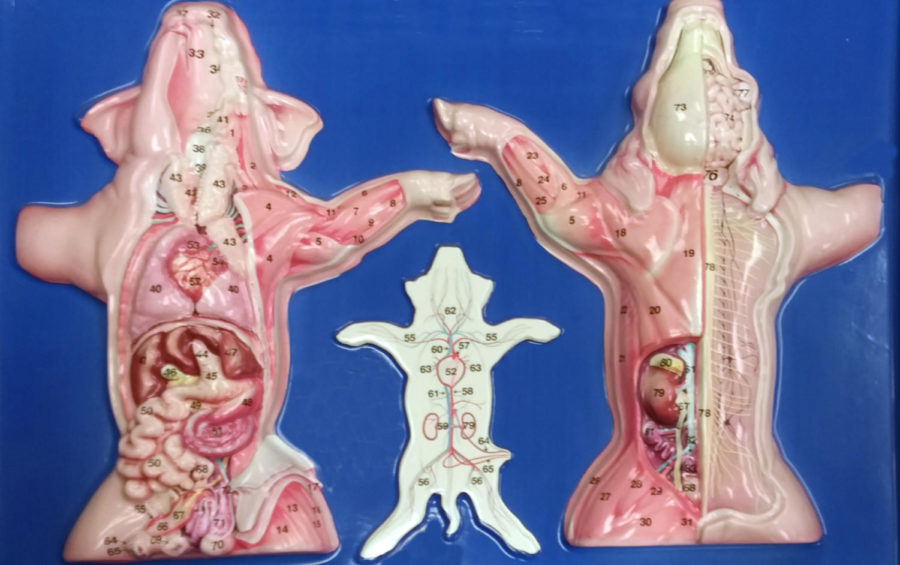Dissection in Science Classes: Is It Necessary?
February 20, 2019
While dissection — the cutting open and examining of bodies for educational purposes — may have been necessary for students a long time ago, advances in technology have prompted many schools to go animal-friendly.
At Santa Fe High, biology classes dissect plants and flatworms as a learning tool. Mr. Pitman, who teaches biology, frowns upon dissection of larger animals. His argument is that it hurts the environment when large numbers of amphibians are removed from the wilderness to be used in dissection. He also said that the fluid used to preserve the animals has an awful smell and can make students sick.
Many students who need to dissect animals for a grade don’t question where the specimens come from. According to the National Anti-Vivisection Society (NAVS), most frogs used for dissection are wild-caught. This poses a danger to the environment. It only takes one species’ population decrease to throw the whole ecosystem out of balance.
Dissection requires the killing of an estimated 12 million animals annually in the U.S. alone, according to NAVS.
Michigan, Wisconsin and Canada have banned taking amphibians from the wild, according to NAVS. They have recognized how the environment can be negatively impacted by removing large numbers of frogs and toads.
With advances in technology, there are several substitutes to cutting open a small animal. According to NAVS, students who used clay models and computer simulations as opposed to the real animal have received equal or higher test scores.
Alternatives to dissection can benefit students as well as avoid ethical issues. New York University uses virtual reality technology to give students a better understanding of the anatomy of different bodies, according to their website. Students cut and examine a virtual animal, giving them the experience without the loss of life.
Detailed and accurate touch-screens the size of tables now give students in medical school the ability to understand how bodies work without using human corpses. This is a new and better way to teach students without using animals, according to the NYU site.
Dissecting animals in the classroom can also be costly. 3D models and diagrams can be reused, whereas an animal already dissected can’t be preserved or reused to teach more students.
Mr. Pitman agrees that with new technology, there is no need to kill animals for educational purposes.
However, some classes at Santa Fe High still practice dissection. In addition to the flatworms dissected in biology classes, fetal pigs (piglets cut out of their mother’s uterus) and cats are dissected in the Anatomy and Physiology class.
According to science teacher Mr. Fancellu, the specimens come from a biological supply company. He also explained that the dissection labs are not optional, but because the class is an elective, students can avoid dissection by simply not taking the class.
“I let my anatomy kids know at the beginning of the year that they would have to do dissection,” said Mr. Fancellu. “So, opting out of that would be opting out of the class.”
Mr. Fancellu continued, “The class is meant to interest them in the medical field… and so you really need to have the knowledge of organs and organ systems and tissues.” He believes dissection is necessary for students to truly understand how living organisms work. He added, “Would you want to go to a surgeon that had never dissected anything? I don’t think anybody would want that.”


